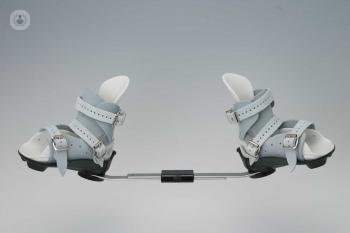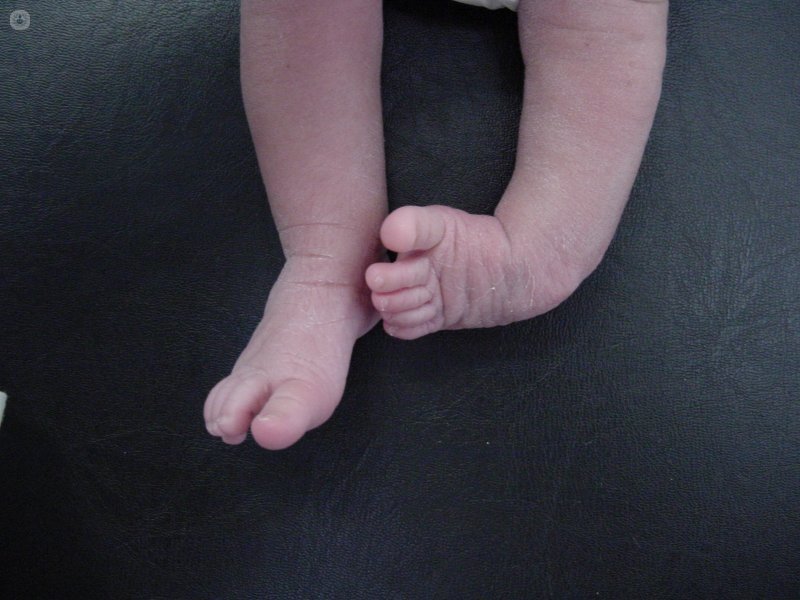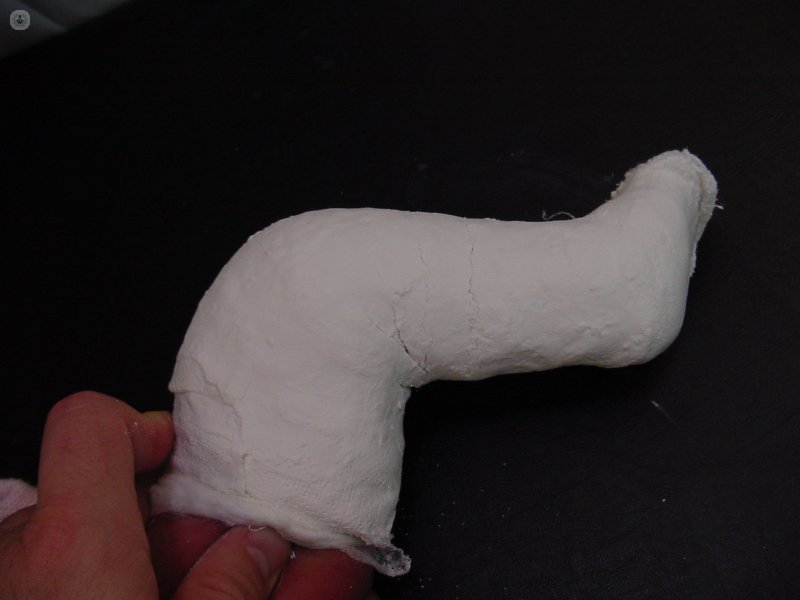Foot equinovaro
Written by:
What is clubfoot?
The clubfoot, also called clubfoot is a congenital deformity of the foot that already appears in the 20th week of gestation.
At birth the foot presents a characteristic shape deflected downward (equine) and the upturned plant (varus). From the medical point of view the foot is equinovaro but I dig a component (fold arc) and adductus (fingers inward).
It is a rigid deformity so that it is not possible to place the foot in a normal position.
Its frequency is about 1 per thousand children, 50% of bilateral cases and is the most common double in boys than in girls.
What is the cause of this condition?
We know that the deformity occurs because the muscles, tendons and ligaments of the back and inside of the leg are denser and less elastic than normal. During the growth of the fetus inside the uterus, these structures are falling short and cause the foot to go progressively diverting. The position in which the foot is placed is so anomalous that the arrangement and shape of the foot bones is altered.
In some cases clubfoot is associated with known neuromuscular diseases but in most cases unknown why these tissues are so dense and so little elastic.
How and when is it diagnosed?
Since this congenital malformation occurs during the first months of pregnancy it is usually possible to display on the ultrasound examination of the fetus of 20 weeks, so that every day is more common prenatal diagnosis of suspicion.
Confirmation of the diagnosis is easy after birth, observing the shape of the foot down (equine) and inward (varus) and checking that we are not able to get a normal position for manipulation.
experience to distinguish it from other congenital malformations such as congenital foot Vertical talus is needed, and some deformities much better prognosis as metatarsus adductus or clubfoot. It is also important to rule out other neuromuscular diseases.
How can it be treated?
The most commonly used treatment involves progressive correction with casts and maintenance of the correction boots by the method described by Dr. Ponseti. For this casts in maximum correction that are changed every week until the full correction are placed. Overall, between three and five changes of gypsum is achieved correct all aspects of the deformity except equinus position (toes) and therefore a small intervention is usually required, percutaneous Achilles tendon lengthening. It is usually performed under local anesthesia and after the last cast is applied for three weeks while it heals the elongated tendon.
As the deformity has great tendency to reproduce achieved after normal foot posture, place a small device (foot abduction brace) that keeps your feet in the right position. This apparatus consists of a pivoted outward botitas and a bar unites. Actually it is a dynamic system that, while maintaining the posture, promotes correction when the child bend your knees. about four months the device is placed in the clock (although it is removed for bathing and dressing) and then held only when the child is asleep (nap and night) to four years old.
Can you leave sequels?
The results at the end of treatment are generally good and the child can do all kinds of physical activities without lameness or disability.
Malformation itself usually associated with a lower foot size (generally one centimeter) and calf (about one centimeter thinner). If the child has two affects the feet, often not recognized, but if you have only one foot deformity, itself a slight asymmetry be charged. Only in some cases there may be a smaller first finger or a slightly shorter leg, usually without functional impact.





